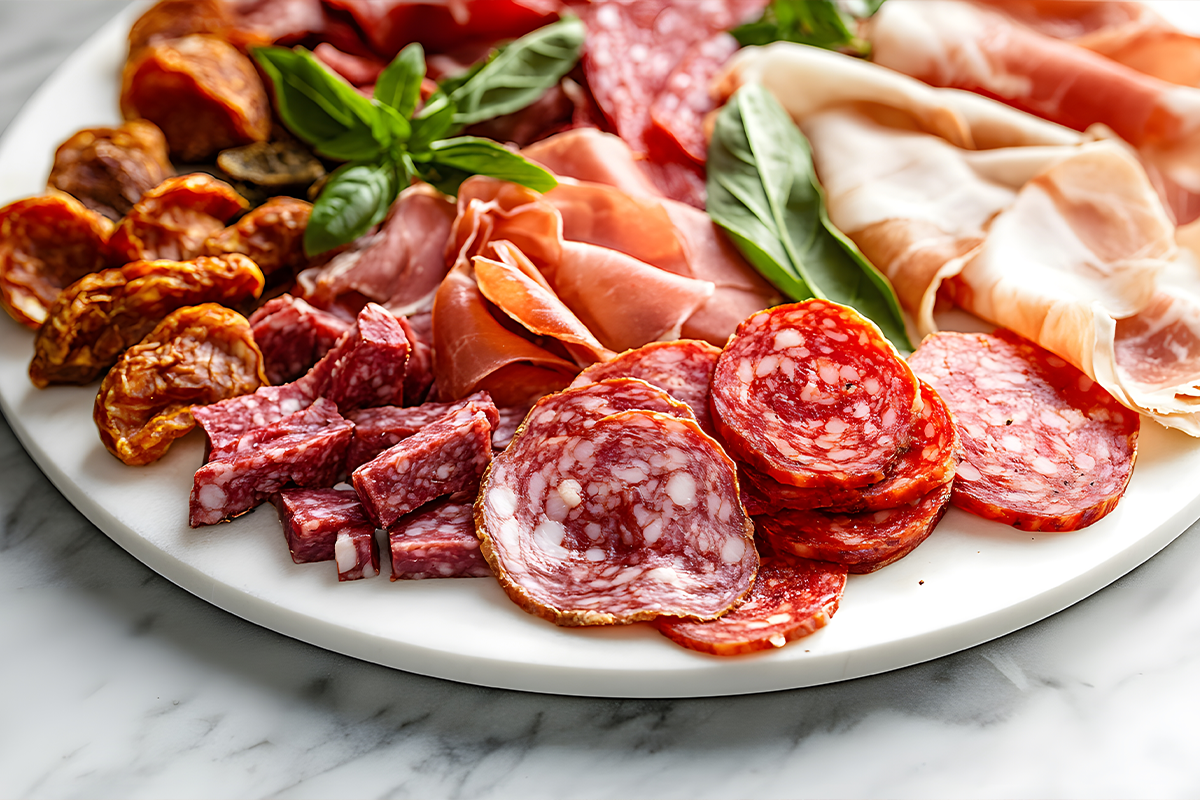
Is Soppressata Pork or Beef? A Comprehensive Guide
Soppressata is a cherished Italian cured meat that boasts a rich history and versatile culinary applications. While it is most commonly made from pork, beef variations are also available, offering unique flavors and textures. This guide explores the distinctions between pork and beef soppressata and highlights its use in a variety of dishes. For complementary recipes, check out options from Solar Recipes, like Delicious Shrimp Recipes or the sweet pairing with Muddy Buddies Recipe.
What is Soppressata?
Soppressata represents the artistry of Italian charcuterie. This cured meat, celebrated for its bold flavors and coarse texture, originates from regions such as Calabria, Apulia, and Tuscany. Producers traditionally use pork as the primary ingredient, but beef soppressata has gained popularity among those seeking alternative flavors or dietary preferences.
Ingredients of Soppressata
- Pork-Based Soppressata: The traditional version relies on cuts like pork shoulder or ham, seasoned with garlic, salt, and pepper.
- Beef Soppressata: This variation appeals to those who prefer leaner meat with a milder flavor.
- Seasoning Additions: Variations may include chili, fennel seeds, or wine, depending on the region.
How Soppressata is Made
Creating soppressata involves several meticulous steps. Producers select premium cuts of pork or beef, grind the meat coarsely, and mix it with flavorful seasonings. After stuffing the mixture into natural casings, they cure and dry it over several weeks to develop its signature taste and texture.
Regional Variations
Different regions in Italy contribute their own twists to soppressata:
- Calabrian Soppressata: Known for its spiciness and PDO certification, this variety is typically made from pork.
- Tuscan Soppressata: Unique for its inclusion of head meat, creating a gelatinous texture.
- Beef Soppressata: Popular in modern markets, this version offers a leaner and subtler alternative to the traditional pork-based product.
Culinary Applications
Soppressata enhances a wide range of dishes:
- Charcuterie Boards: Pair soppressata with cheeses like provolone, gouda, or mozzarella for a sophisticated appetizer.
- Pasta and Pizza: Use it as a topping or incorporate it into sauces for added depth of flavor.
- Sandwiches and Paninis: Its bold, savory notes elevate simple sandwiches into gourmet meals.
FAQs About Soppressata
Is soppressata always made from pork?
No, while pork is the traditional choice, beef soppressata is increasingly available for those who prefer it.
Which is healthier, pork or beef soppressata?
Beef soppressata is usually leaner, but pork provides a richer and more robust flavor profile.
Can you eat soppressata raw?
Cured soppressata is ready to eat straight from the packaging. However, uncured versions must be cooked before consumption.
How should you store soppressata?
Wrap it tightly and store it in the refrigerator to maintain freshness. For long-term storage, freezing is also an option.
Nutritional Insights
Soppressata offers a good source of protein and essential nutrients like iron and zinc. Pork versions may have higher fat content, while beef alternatives often provide a leaner option. Moderation is key to enjoying this flavorful cured meat as part of a balanced diet.
Internal Linking Opportunities
- Discover how cured meats pair well with sweet treats like the Muddy Buddies Recipe.
- Enhance your meals with innovative uses of cured meats in the Delicious Shrimp Recipes.
- Create hearty platters by pairing soppressata with recipes like the Brooks BBQ Chicken Recipe.
Conclusion
Whether made from pork or beef, soppressata showcases the rich tradition of Italian charcuterie. Its bold flavors and versatile applications make it a standout choice for antipasti platters, sandwiches, and other dishes. Try experimenting with both types to experience the unique qualities they bring to your meals. Soppressata’s rich history and culinary appeal ensure it will remain a favorite for years to come.



